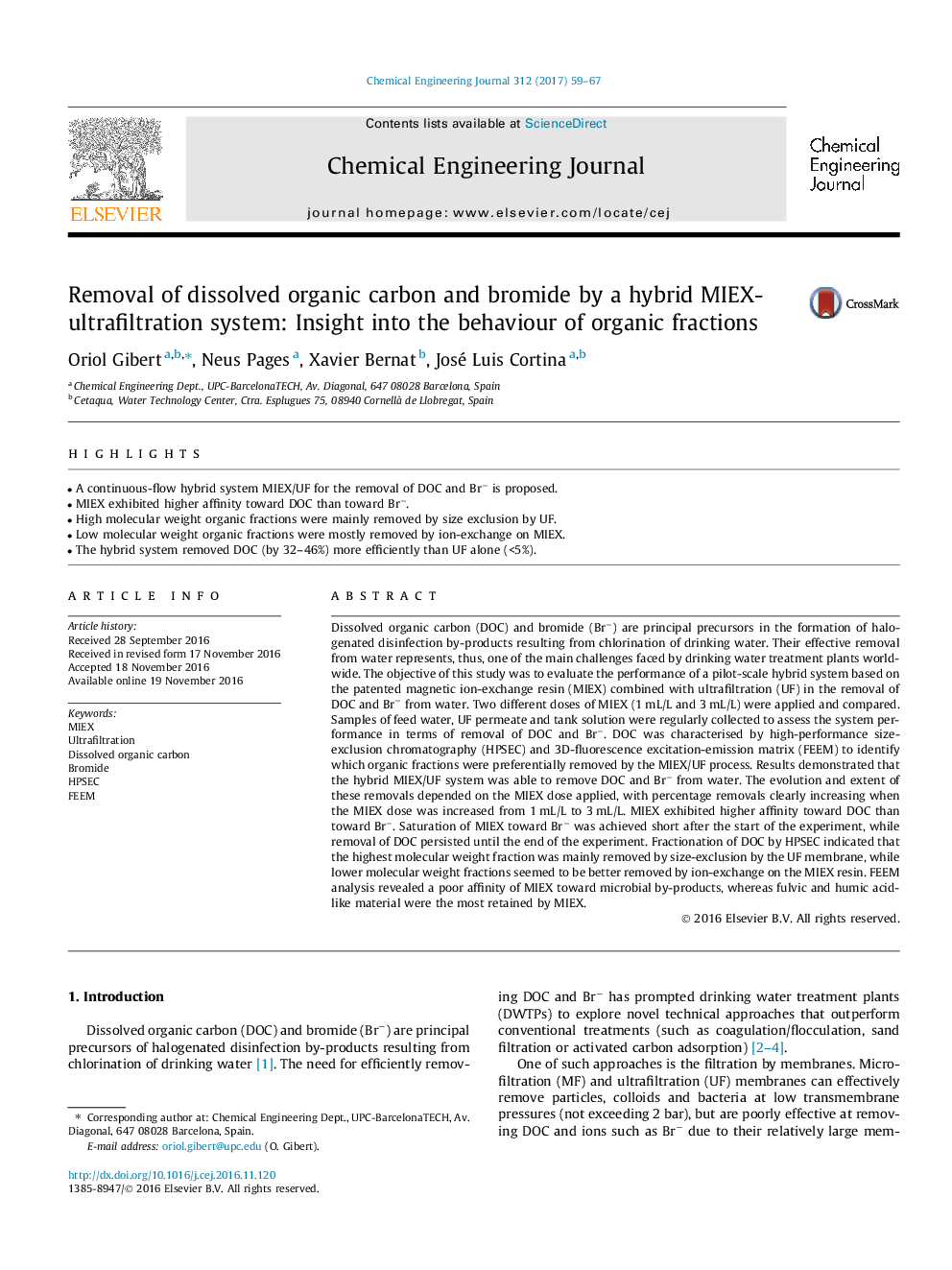| کد مقاله | کد نشریه | سال انتشار | مقاله انگلیسی | نسخه تمام متن |
|---|---|---|---|---|
| 6466440 | 1422966 | 2017 | 9 صفحه PDF | دانلود رایگان |

- A continuous-flow hybrid system MIEX/UF for the removal of DOC and Brâ is proposed.
- MIEX exhibited higher affinity toward DOC than toward Brâ.
- High molecular weight organic fractions were mainly removed by size exclusion by UF.
- Low molecular weight organic fractions were mostly removed by ion-exchange on MIEX.
- The hybrid system removed DOC (by 32-46%) more efficiently than UF alone (<5%).
Dissolved organic carbon (DOC) and bromide (Brâ) are principal precursors in the formation of halogenated disinfection by-products resulting from chlorination of drinking water. Their effective removal from water represents, thus, one of the main challenges faced by drinking water treatment plants worldwide. The objective of this study was to evaluate the performance of a pilot-scale hybrid system based on the patented magnetic ion-exchange resin (MIEX) combined with ultrafiltration (UF) in the removal of DOC and Brâ from water. Two different doses of MIEX (1Â mL/L and 3Â mL/L) were applied and compared. Samples of feed water, UF permeate and tank solution were regularly collected to assess the system performance in terms of removal of DOC and Brâ. DOC was characterised by high-performance size-exclusion chromatography (HPSEC) and 3D-fluorescence excitation-emission matrix (FEEM) to identify which organic fractions were preferentially removed by the MIEX/UF process. Results demonstrated that the hybrid MIEX/UF system was able to remove DOC and Brâ from water. The evolution and extent of these removals depended on the MIEX dose applied, with percentage removals clearly increasing when the MIEX dose was increased from 1Â mL/L to 3Â mL/L. MIEX exhibited higher affinity toward DOC than toward Brâ. Saturation of MIEX toward Brâ was achieved short after the start of the experiment, while removal of DOC persisted until the end of the experiment. Fractionation of DOC by HPSEC indicated that the highest molecular weight fraction was mainly removed by size-exclusion by the UF membrane, while lower molecular weight fractions seemed to be better removed by ion-exchange on the MIEX resin. FEEM analysis revealed a poor affinity of MIEX toward microbial by-products, whereas fulvic and humic acid-like material were the most retained by MIEX.
Journal: Chemical Engineering Journal - Volume 312, 15 March 2017, Pages 59-67